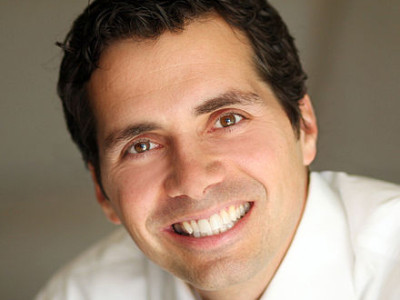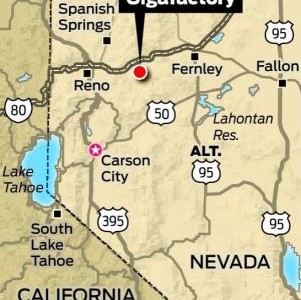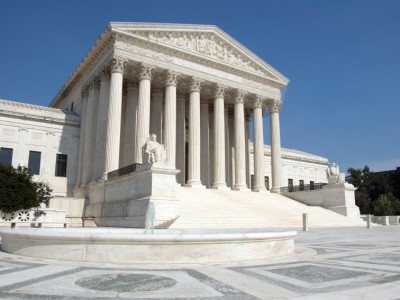Some lessons from l’affaire Tesla
There has been a lot of commentary over the decision by Tesla to make its multi-billion dollar investment in a new battery factory in Nevada, rather than California. There have been some criticisms that California did not do enough to lure Tesla here, and/or that its business climate is not supportive enough for investment, including for high-tech, clean-energy investments like Tesla’s. Some of the inducements that the Governor and senior legislative leadership were...
CONTINUE READINGThe Iowa Senate Race and the Environment
The environmental stakes are high in the Hawkeye State.
Iowa is a state where the Republican and Democratic candidates have starkly different views about the environment. Joni Ernst, the Republican Senatorial candidate in Iowa, is staunchly anti-environmental. In one of the Republican debates, she had this to say: Another area that we need to look at is the Environmental Protection Agency. When we talk about the rules and regulations that are burdening business owners, whether it is in ag, whether it is in industry here in...
CONTINUE READINGWhy Does Mitch McConnell Hate the Environment?
McConnell's environmental record is terrible -- worse than Rand Paul or Jim Inhofe.
Mitch McConnell hates the environment. When I say McConnell hates the environment, I mean that he's an environmental disaster. The environment would be in better hands if he were replaced as the Senate Republican leader by Ted Cruz or Rand Paul. Here's a fun fact: Mitch McConnell's environmental record is twice as bad as Ted Cruz's, according to their lifetime League of Conservation Voters (LCV) scores. In fact, McConnell's 2013 LCV score was a big fat zero. ...
CONTINUE READINGKashkari’s Unworkable Environmental Review “Reform” Plan
Net zero buildings for everyone?
In last night's California gubernatorial debate, Republican candidate Neel Kashkari proposed a major reform to the California Environmental Quality Act (CEQA), which requires environmental review of new projects. But rather than gutting CEQA completely, a la State-Senator-turned-Chevron-lobbyist Michael Rubio, Kashkari proposed to give all projects the same breaks that the Sacramento Kings received in last year's SB 743 (Steinberg). As Kashkari explained: When the S...
CONTINUE READINGGreg Orman ♥ Cleantech
Was a Clean Energy Entrepreneur, Now Has a Serious Shot at the U.S. Senate
Yesterday, we got some surprising news from Kansas. The Democratic candidate withdrew and threw his support to Independent candidate Greg Orman, who might now be considered the front-runner against the incumbent Republican Senator. Orman's website has a refreshing take on energy and environmental issues: In Washington today, one side says we must protect our environment no matter what impact it will have on our economy. The other side says doing anything at all will...
CONTINUE READINGWhy Tesla’s Nevada Gigafactory Could Be Bad For The Environment, Compared To A California Site
Electric vehicle pioneer to announce its siting decision today
Some California environmentalists may be celebrating now that Tesla has apparently decided to build its $5 billion "gigafactory" in Nevada instead of California. Lawmakers here had toyed with the idea of weakening the state's signature environmental law, the California Environmental Quality Act (CEQA), to help expedite review on the factory and therefore encourage Tesla to locate in-state, possibly in Stockton. But those plans fell through last week. But Tesla's d...
CONTINUE READINGSome (sort of) good news on sea level rise
Reef growth may be able to keep pace with climate change, keeping island nations above water
That sea level rise driven by global warming will soon make low-lying island nations uninhabitable has been widely publicized and readily accepted. In 2009, then-President Mohamed Nasheed of the Maldives held a cabinet meeting underwater in full scuba gear to raise global awareness of the threat of climate change. (The underwater meeting later became the core of a documentary film, The Island President, released just as Nasheed was deposed.) That same year, the U.N. ...
CONTINUE READINGUARG Strikes Back
Will UARG Persuade the Supreme Court to Overturn New Air Quality Standards?
"UARG" sounds like the name of a monster in a children's book or maybe some kind of strangled exclamation. But it actually stands for Utility Air Regulatory Group, which represents utility companies in litigation. UARG did well in two important Supreme Court cases last year, winning part of the case it brought against EPA climate change rules and getting the limited outcome it advocated in another case (EME Homer). So its legal efforts deserve to be taken seriousl...
CONTINUE READINGMisleading Attacks On California’s New Transportation Analysis Under CEQA
Big Law Firm Holland & Knight Misrepresents New State Guidelines
Last year, the California legislature passed badly needed reform to change how agencies evaluate a project's transportation impacts under the California Environmental Quality Act (CEQA). The Governor's Office of Planning and Research (OPR) was tasked with coming up with new guidelines for how this analysis should be done going forward. As I blogged about, the new proposed transportation metric, vehicle miles traveled (VMT), will inherently benefit infill projects and...
CONTINUE READINGA Hidden Property Gem From Justice Jackson
Where Do Property Rights Come From?
Although it is never fun to do new class preparation, I like teaching new classes because it forces me gives me the opportunity to learn new material and new areas of law. So it is this semester, when I will teach water law for the first time. In this case, not only have I learned a new subject matter, but discovered a hidden gem of property law, which I usually teach. Not surprisingly, it comes from Justice Robert Jackson, whom I regard as the best writer to have eve...
CONTINUE READING












